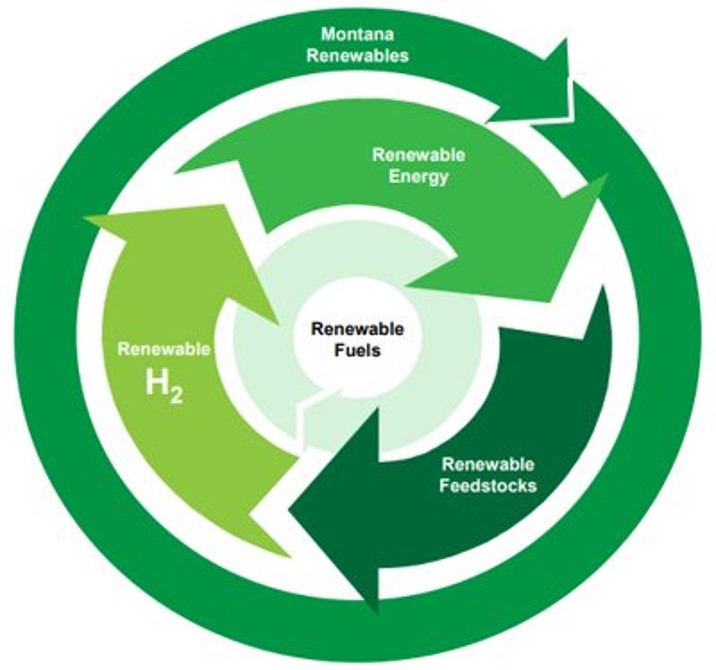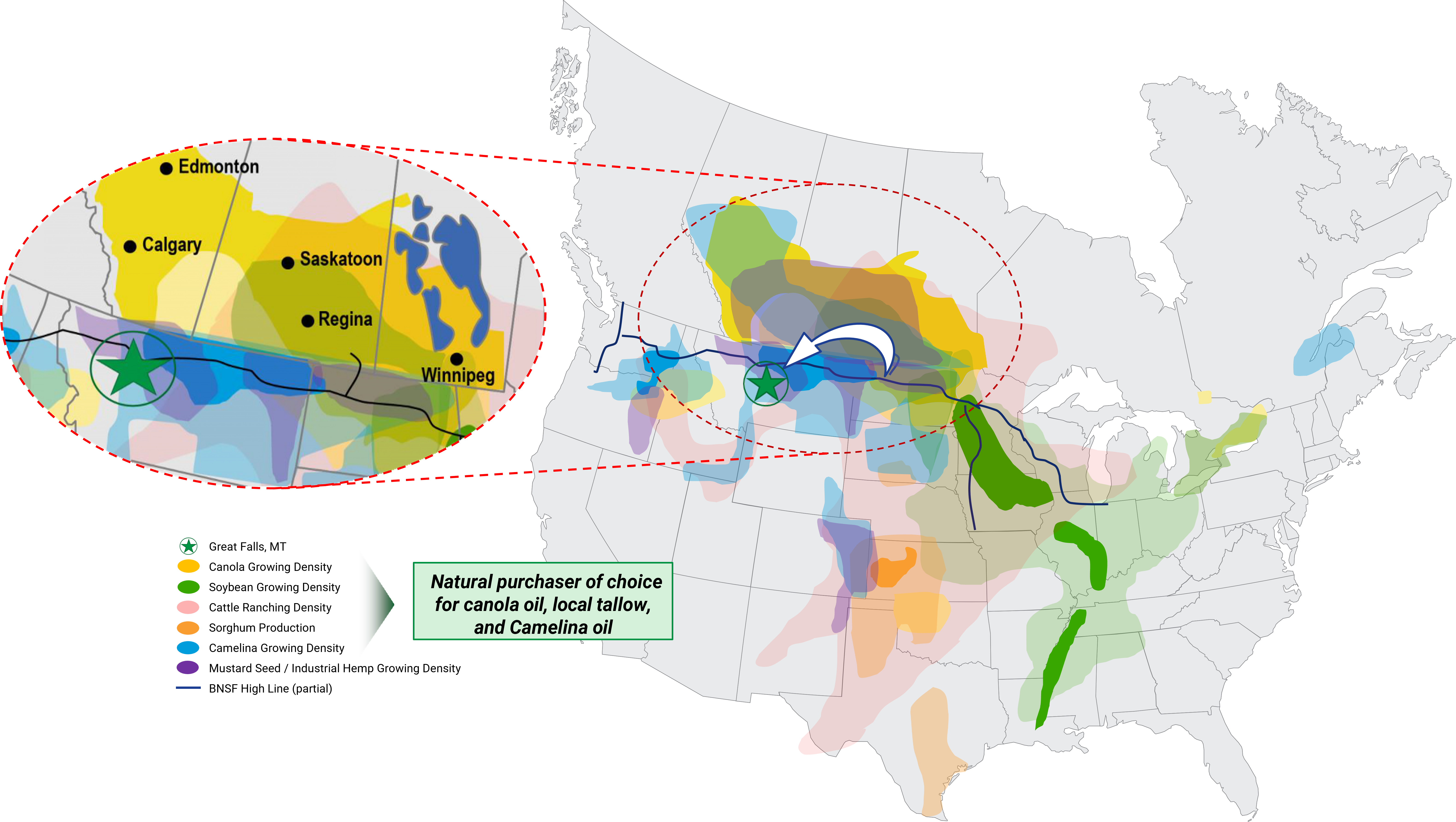Renewable Feedstocks
Feedstocks
Local Supply

Renewable and Sustainable
Renewable feedstocks are naturally occurring and sourced from a wide variety of oil seed crops, byproducts from ethanol production, and waste byproducts from the food supply chain. With our feedstock pretreatment technology, Montana Renewables can run any renewable feedstock from anywhere in the world.
Canola Oil
Canola oil is one of the feedstocks that can be used to produce renewable fuels, such as biodiesel. Biodiesel is a type of renewable diesel fuel that is made from vegetable oils, animal fats, or recycled cooking oils. Canola oil is an attractive feedstock for biodiesel production because it has a high yield per acre and a low level of saturated fatty acids, which can cause high viscosity in the final biodiesel product.
Tallow
Tallow is a type of animal fat that can be used as a feedstock for renewable fuels. A byproduct of the meat production industry, tallow is obtained from rendering the fatty tissues of cattle, pigs, and other livestock. It can be transported via railcar or truck to facilities for conversion into renewable diesel, sustainable aviation fuel, renewable naphtha and/or other products.
Distillers’ Corn Oil
Distillers’ Corn Oil (DCO) is a byproduct of the production of ethanol from corn and can be used as a feedstock for renewable fuels. Corn oil is extracted from the distillers’ dried grains with solubles (DDGS), a high-protein byproduct of the ethanol production process, and has similar properties to other vegetable oils, such as canola and soybean oil, which are commonly used as feedstocks for renewable diesel, sustainable aviation fuel, renewable naphtha production.
Camelina Oil
Camelina oil is another feedstock that can be used to produce renewable fuels. Camelina, also known as “gold of pleasure,” is a fast-growing, drought-resistant oilseed crop that is well-suited to cultivation in regions with challenging climates and soils. This makes it an attractive feedstock for renewable fuel production in areas where other crops are less viable.
Strategically Located
Montana Renewables’ production facility in Great Falls, Montana is strategically located close to major feedstock sources in both the United States and Canada, including the temperate oil seed growing zone along with large farm and ranch operations in Montana and the adjacent states and provinces. This strategic location significantly decreases the carbon emissions as well as transportation costs of both the renewable feedstock to MRL and the renewable fuel to product off-takers.
The demand for renewable fuel is the highest in states and/or provinces that have enacted a Low Carbon Fuel Standard (LCFS) that is generally concentrated in the northwest United States and Canada. An additional emissions benefit is that the site’s electrical power is physically sourced from the five hydroelectric dams immediately downstream of Montana Renewables’ location on the upper Missouri River.

Renewable Feedstocks
Local Supply, Long & Sustainable
Montana Renewables, LLC is a subsidiary of Calumet, Inc. Visit Calumet.com for more information.

